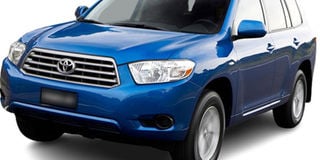Prime
Ask the Mechanic: Should I sell or refurbish my old car?

Hello Paul,
I seek advice about selling my 2003 Toyota Kluger which I have had for five years. The engine and gearbox are still intact and the body is free of major accident repair. I frequently drive short distances between my office and home, shopping at my neighbourhood mall or visiting friends in Kampala City centre. I am torn between keeping this beautiful old car and selling it to upgrade to the pricey 2007 Kluger. Please advise.
Kate
Hello Kate, the conflict in your mind over a decision to replace your well-maintained old car with a newer one is understandable. A number of motorists nowadays prefer to keep their well- maintained used cars rather than incur the cost of upgrading while others choose to move on and enjoy the benefits of a newer car.
The motivation to keep your ‘old faithful’ car can be premised on the belief that it is cheaper to maintain an existing old car than undertake the higher cost of buying a newer one.
Proponents for the case to buy a newer car argue that newer cars have significantly lower repair costs. This argument is premised on the assumption that newer cars are in a better technical condition with lower mileage related parts wear and better reliability.
On the other hand, older cars tend to require many costly and unplanned mileage-related fixes and parts replacements such as suspension.
However these repair costs are still cheaper than the undertaking or sum spent to buy a newer car. It is worth noting that newer used cars will also occasionally break down and have costlier fixes because their repair parts are more expensive.
Newer cars tend to have better comfort features (better aesthetics), technology and styling.
Older cars were once comfortable and can have their interior upholstery refurbished or upgraded, convenience features restored or updated to modern standards and body repaired and repainted.
Newer cars usually have superior performance and fuel efficiency as well as better handling characteristics critical for highway driving. This is due to modern engine technology and suspension designs.
When you maintain your old car well by servicing all fluids and filters on time and carrying out required fixes diligently, it will perform well enough to comfortably get you to your destination, after all you are mainly journeying around Kampala City centre.
There is the notion that some older cars are actually built tougher than the newer ones; talk about the age of plastics.
Kate, you can decide to keep your old faithful, refurbish and repair it while you save or invest your money elsewhere.

CAN I DETECT MECHANICAL PROBLEM THROUGH TOUCH?
Hello Paul, we are often advised to detect and diagnose mechanical problems by touching components to feel how hot they are; wheel hubs to see if the brakes are binding and radiator top tanks and differentials to see if they are overheating, among others. However, how hot is too hot? Is there any way to measure that? John
Hello John, do not touch your wheel hubs, brake discs or calipers and engine radiator to find out if they are overheating. Doing this will result in serious burn injuries since sometimes, those components can be as hot as 100°C, depending on how hard they have worked. There are better ways to know if the above systems are overheating and need attention.
The most common sign of wheel hub failure is a grinding noise or wobbly tyre as you drive. Brake failure by jamming usually causes extreme overheating. You can tell this is happening when the brakes bind and you have to drag the wheels or experience smoke or a strong burning smell.
An overheating engine can be monitored using the engine coolant temperature gauge on your instrument clustre. This gauge can be used to read actual engine temperature to determine if it is abnormal. In extreme cases, the engine overheating red light that is shaped as a thermometer will alert you that the car engine is overheating. You do not need to risk getting scalded as you check the component temperature with bare hands.
CAN I DO WITHOUT A CATALYTIC CONVERTOR?
Hello Paul, my mechanic says the catalytic convertor in my exhaust pipe is damaged and needs to be replaced and it will be expensive. Will the car still function properly if I have it removed and instead fit a straight pipe in the gap it leaves?
Don
Don, the catalytic convertor is a honey comb-shaped component on the exhaust pipe designed to chemically reduce the toxicity of exhaust fumes for reduced harmful emissions. The catalytic convertor (CAT) works with the electronic engine management system to monitor exhaust emission using oxygen sensors fitted to the exhaust.
Should you eliminate the CAT, your engine management system will display the check engine light or reduce car performance, assuming there is a fault with the emission system.
The straight pipe will not be able to muffle engine sound as the catalytic convertor does. So, it is better to replace the CAT especially since there are new catalytic convertor sellers at reasonable pricing in Kampala City centre.

WHAT IS THE CORRECT ATF FLUID FOR MY DX 5EFE?
Hello Paul, what is the required Automatic transmission fluid to use in an automatic gearbox of Toyota DX 5E-FE?
Denzel.
Hello Denzel, the 1992 Toyota DX with a 5EFE engine requires Dexron II Automatic Transmission Fluid to service its automatic gearbox. Where you cannot find Dexron II, you can use Dexron III whose qualities include and supersede those of the older Dexron II ATF. You will need 5.5 litres of ATF to service your gearbox.




